Donald Judd – don’t call him Minimal. Or American.
‘[Minimalism] has nothing to do with anything’, blisters Flavin Judd, son of artist Donald – perhaps one of the artists we’d usually associate most with the movement.

Source: Photo by Jamie Dearing. Judd Art © Judd Foundation. Licensed by VAGA, New York, NY Courtesy of Jud
Donald Judd with his work, Untitled, 1975, at La Mansana de Chinati_The Block, Marfa, 1982
As he shows us round the new Donald Judd show at London’s David Zwirner Gallery, Flavin is keen to state how the terms ‘minimal’ and ‘American’ should be removed as far as possible from the lexicon surrounding his late father.
Minimal or not, however, there’s no denying the beautiful simplicity that characterises Judd’s work.
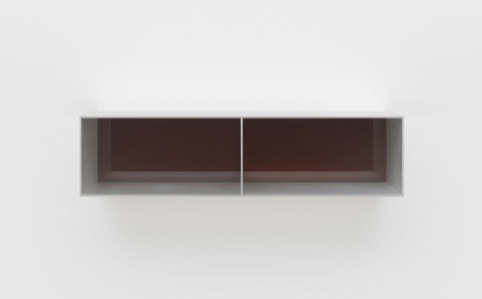
Source: Art © Judd Foundation. Licensed by VAGA, New York, NY. Courtesy of David Zwirner, New York/London
Untitled (Menziken 88-63), 1988 Anodized aluminum clear with brown Plexiglas
In 1965, Donald Judd’s essay Specific Objects outlines his ethos of producing work that was ‘objective and straightforward’, that avoided the inherited ideas of painting and sculpture and any grand, complicated or philosophical statements that surrounded them.
The new exhibition presents a series of works that span Judd’s career, highlighting the artist’s preoccupation with simple box forms and beautiful flashes of colour.
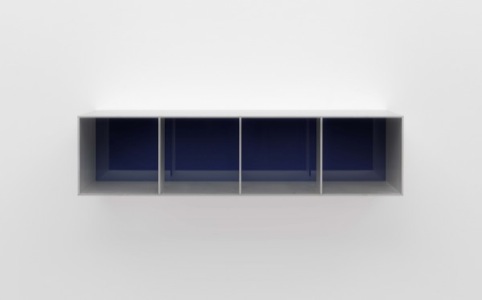
Source: Art © Judd Foundation. Licensed by VAGA, New York, NY. Courtesy of David Zwirner, New York/London
Untitled (Menziken 88-92), 1988 Anodized aluminum clear with blue Plexiglas
These boxes or stacks are often arranged in easily-read pattern formations. Every sequence, according to Flavin, was designed to be easily understood, forming patterns that ‘people got as soon as they saw them.’
This desire for legibility in Donald Judd’s work carries through into his choice of materials. All are flat, uniform textures, created from industrial material such as plywood, steel, concrete, Plexiglas and aluminium.
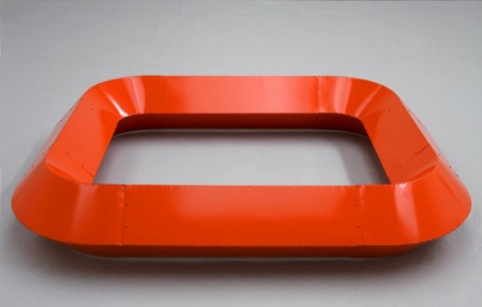
Source: © Judd Foundation. Licensed by VAGA, New York, NY. Courtesy of David Zwirner, New York/London
Untitled, July 6, 1964 Light cadmium red enamel on galvanized iron
Because Donald was ‘not great with his hands’, according to Flavin, these components were passed onto commercial fabricators with the designs, and formed around the feasibility of their properties as much as aesthetic concerns.
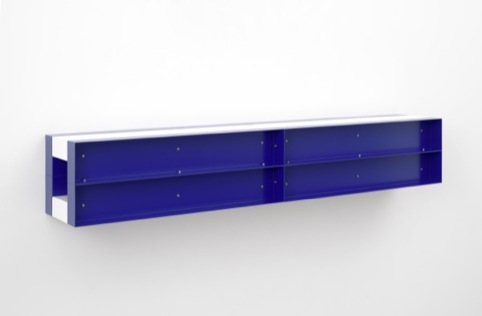
Source: Art © Judd Foundation. Licensed by VAGA, New York, NY. Courtesy of David Zwirner, New York/London
Untitled (Lascaux 89-59), 1989 Enamel on aluminum
That’s not to say, however, that aesthetics take a back seat to fabrication constraints. Far form it.
The vivid bright pink Plexiglas, the glorious egg-yolk yellow and the mesmerising structures of the work are truly beautiful – whatever you label them.
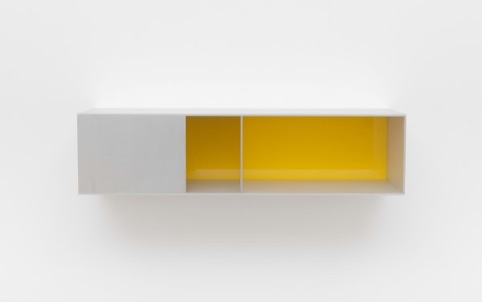
Source: Art © Judd Foundation. Licensed by VAGA, New York, NY. Courtesy of David Zwirner, New York/London
Untitled (Menziken 91-141), 1991 Anodized aluminum clear with yellow Plexiglas
Donald Judd runs from 21 June – 19 September at David Zwirner, 24 Grafton Street, London W1S
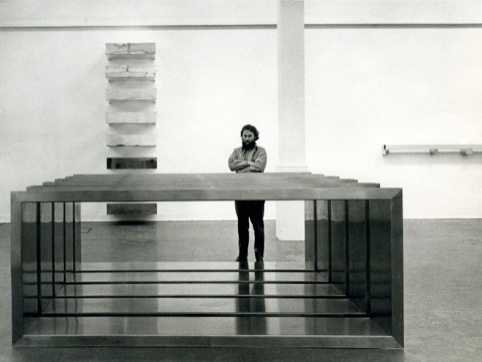
Source: Photo by Richard Einzig, Brechten-Einzig Ltd. Judd Art © Judd Foundation Licensed by VAGA, New Yor
Donald Judd at Whitechapel Gallery, 1970
-
Post a comment




